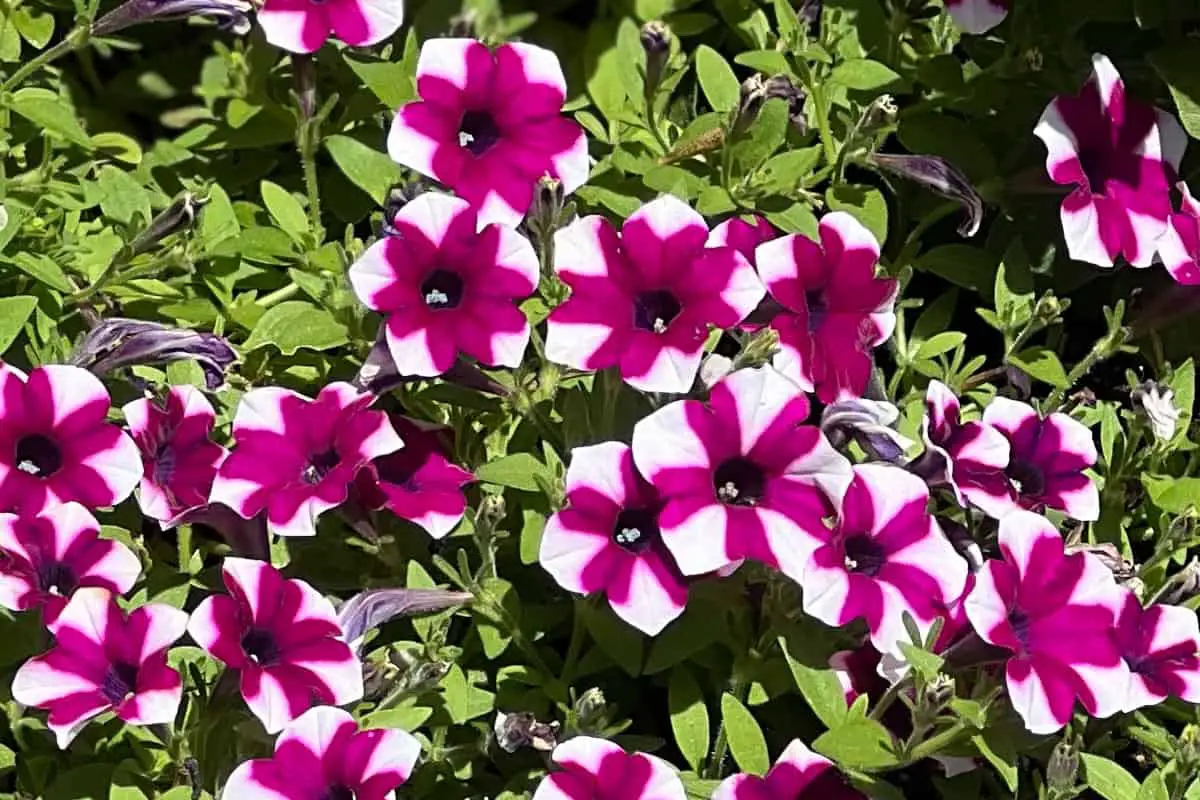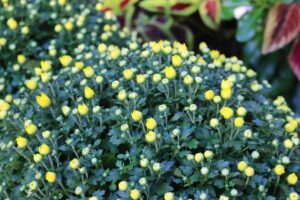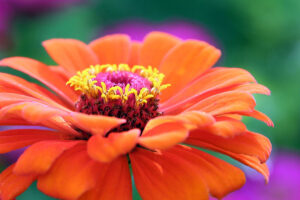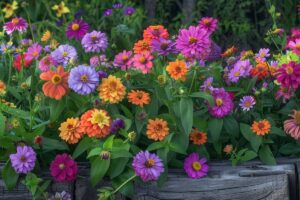This page may contain affiliate links. If you click and buy, we might get a small commission at no cost to you.
Gardens are not just about the immediate spectacle of blooms but also about the sustainable beauty they can re-create year after year. Self-seeding annuals offer a unique advantage to gardeners—after their initial planting, they generously return each season, sprouting from the seeds dropped the previous year. This natural reseeding process reduces gardening work, saves money, and ensures your garden is continuously vibrant with minimal effort. These plants are particularly beneficial for creating an ever-evolving garden landscape that shifts and matures autonomously over time.
Self-seeding annuals adapt well to different climates, ensuring that no matter where you garden, there is likely a self-seeding plant that will thrive in your specific zone. While some self-seeders are hardy and can survive in cooler climates, others flourish in warmer regions. Understanding the hardiness zones and the specific needs of each plant can help gardeners select the best varieties for their gardens. Here is a list of some wonderful self-seeding annuals that can bring consistent beauty to your garden year after year.
Types of Self-Seeding Annuals
1. Petunia
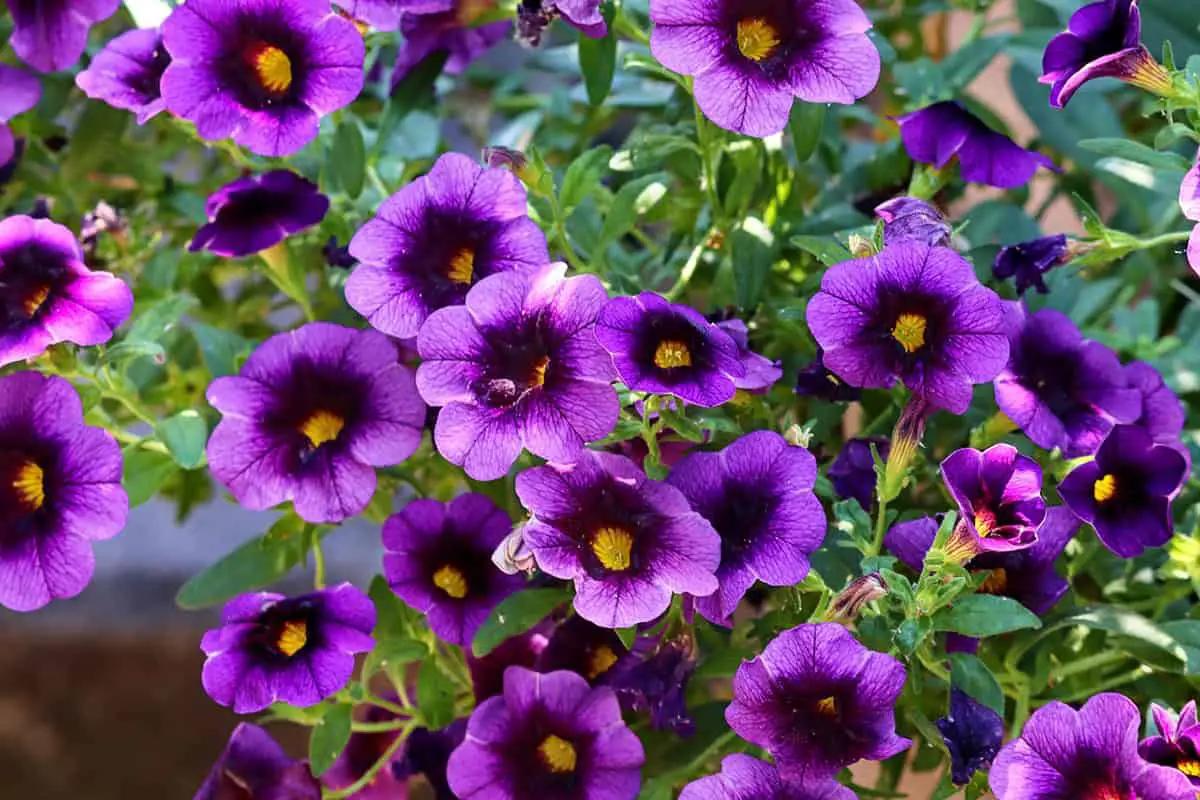
Scientific name: Petunia × atkinsiana
Sun requirements: Full sun
Height: 6″-18″
Hardiness zones: 9-11
Petunias are robust bloomers, ideal for gardeners who enjoy their showy, colorful displays throughout the growing season. Thriving in full sun, these plants blossom most abundantly in warm temperatures and are considered annuals across most climates. In zones 9-11, they can survive as perennials. Their easy-to-grow nature makes them a favorite choice for both garden beds and hanging baskets, creating a spectacular drapery of color when cascading over the edges.
To increase the chances of your petunias self-seeding, allow some of the spent flowers to remain on the plant and go to seed. This will help ensure a delightful surprise of blooms in the following season without much effort from the gardener. Additionally, planting petunias in well-draining soil and ensuring moderate moisture can help maximize their blooming potential. They are particularly striking in mass plantings or as borders, where their rich colors can truly shine.
2. Snapdragon
Scientific name: Antirrhinum majus
Sun requirements: Full sun to partial shade
Height: 6″-36″
Hardiness zones: 7-11
Snapdragons are tender perennials in zones 7-11 but may self-seed in cooler climates where they are grown as annuals. They are cool weather bloomers that prefer temperatures between 40°-70°F (4°-21°C) and will stop blooming for a time midsummer but usually bloom again in fall as long as they survive the hot summer weather.
To increase the chances of your snapdragons self-seeding, allow some of the flower spikes to remain and set seed. This will promote natural reseeding and help ensure a fresh batch of snapdragons the following year. Plant your snapdragons in partial shade with morning sun for best results. This will help to keep their roots cool during the hottest months. These plants are very resilient despite their delicate appearance and can even survive a light frost or two once established. They are one of my favorite flowers for the cutting garden.
3. Calendula

Scientific name: Calendula officinalis
Sun requirements: Full sun to partial shade
Height: 12″-24″
Hardiness zones: 2-11
Calendulas are versatile flowers known for their bright, cheerful blooms and medicinal properties. These hardy plants thrive in full sun to partial shade and can tolerate a variety of soil conditions. They are commonly grown as annuals but can self-seed prolifically, ensuring new plants emerge each year.
To increase the chances of your calendulas self-seeding, allow some of the flower heads to mature and drop seeds naturally. This process will lead to a continuous display of blooms throughout the growing season. Calendulas are excellent for borders, containers, and as companion plants in vegetable gardens due to their pest-repellent qualities. They are also favored for their edible flowers, which can add a splash of color to salads and other dishes.
4. Larkspur
Scientific name: Consolida ajacis
Sun requirements: Full sun
Height: 12″-36″
Hardiness zones: 2-11
Larkspur is a charming annual that produces tall spikes of delicate, colorful flowers. These plants thrive in full sun and prefer cooler temperatures, making them ideal for spring and early summer gardens. Larkspur can self-seed generously, providing new plants year after year without much effort.
To increase the chances of your larkspur self-seeding, allow some of the flower spikes to mature and release their seeds. This will ensure a natural reseeding process, resulting in fresh blooms the following season. Larkspur is excellent for creating vertical interest in garden beds and makes a stunning cut flower for arrangements. They are particularly attractive to pollinators, adding an extra benefit to your garden ecosystem.
5. Nigella (Love-in-a-Mist)
Scientific name: Nigella damascena
Sun requirements: Full sun to partial shade
Height: 8″-20″
Hardiness zones: 2-11
Nigella, commonly known as Love-in-a-Mist, is a charming annual known for its unique seed pods and delicate, fern-like foliage. These plants thrive in full sun to partial shade and can adapt to a variety of soil conditions. Nigella is a prolific self-seeder, ensuring a continuous display of blooms year after year.
To increase the chances of your nigella self-seeding, allow some of the seed pods to mature and release their seeds naturally. This process will lead to a fresh crop of plants each season. Nigella is excellent for borders, cottage gardens, and wildflower meadows. The seed pods can also be used in dried flower arrangements, adding a unique touch to your floral displays.
6. Cosmos

Scientific name: Cosmos bipinnatus
Sun requirements: Full sun
Height: 12″-60″
Hardiness zones: 2-11
Cosmos are beloved for their airy, daisy-like flowers that bloom profusely throughout the summer. These plants thrive in full sun and can tolerate poor soil conditions, making them easy to grow in various garden settings. Cosmos are prolific self-seeders, ensuring a vibrant display of flowers year after year.
To increase the chances of your cosmos self-seeding, allow some of the flowers to go to seed and scatter naturally. This will promote a fresh crop of plants the following season. Cosmos are excellent for borders, meadows, and as cut flowers. They attract beneficial insects and pollinators, adding to the overall health of your garden.
7. California Poppy
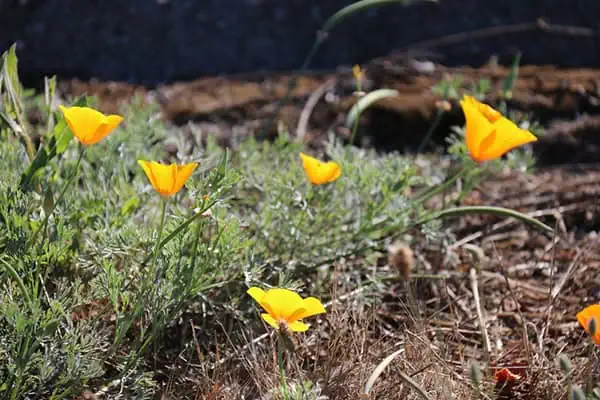
Scientific name: Eschscholzia californica
Sun requirements: Full sun
Height: 12″-18″
Hardiness zones: 6-10
California poppies are renowned for their bright, cheerful blooms that thrive in full sun and well-drained soil. These plants are drought-tolerant and can adapt to poor soil conditions, making them ideal for low-maintenance gardens. California poppies are prolific self-seeders, ensuring a continuous display of flowers year after year.
To increase the chances of your California poppies self-seeding, allow some of the flowers to mature and release their seeds naturally. This will lead to a fresh crop of plants each season. California poppies are excellent for borders, rock gardens, and wildflower meadows. They add a splash of vibrant color to any garden setting and attract beneficial insects and pollinators.
8. Marigold
Scientific name: Tagetes spp.
Sun requirements: Full sun
Height: 6″-36″
Hardiness zones: 2-11
Marigolds are popular for their bright, cheerful blooms and ability to deter garden pests. These plants thrive in full sun and well-drained soil, making them easy to grow in various garden settings. Marigolds can self-seed prolifically, ensuring a vibrant display of flowers year after year.
To increase the chances of your marigolds self-seeding, allow some of the flower heads to mature and release their seeds naturally. This process will lead to a continuous display of blooms throughout the growing season. Marigolds are excellent for borders, containers, and companion planting in vegetable gardens. Their bright colors and pest-repellent qualities make them a valuable addition to any garden.
9. Zinnia

Scientific name: Zinnia elegans
Sun requirements: Full sun
Height: 12″-48″
Hardiness zones: 2-11
Zinnias are beloved for their bold, colorful blooms that thrive in full sun and well-drained soil. These plants are easy to grow and can tolerate heat and drought, making them ideal for various garden settings. Zinnias are prolific self-seeders, ensuring a vibrant display of flowers year after year. The bloom shown above was grown in my own garden.
To increase the chances of your zinnias self-seeding, allow some of the flowers to go to seed and scatter naturally. This will promote a fresh crop of plants the following season. Zinnias are excellent for borders, mass plantings, and as cut flowers. They attract beneficial insects and pollinators, adding to the overall health of your garden.
10. Bachelor’s Button (Cornflower)
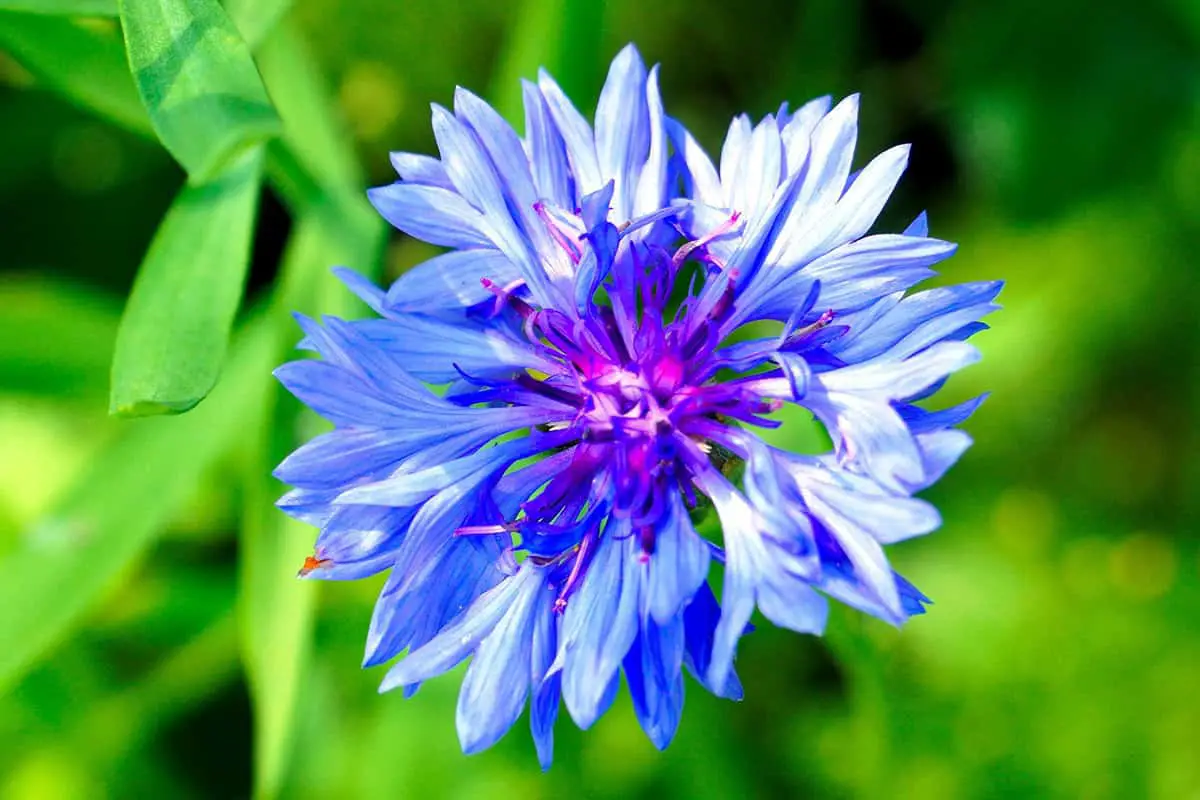
Scientific name: Centaurea cyanus
Sun requirements: Full sun
Height: 12″-36″
Hardiness zones: 2-11
Bachelor’s Buttons, also known as Cornflowers, are charming annuals known for their bright blue blooms. These plants thrive in full sun and well-drained soil, making them easy to grow in various garden settings. Bachelor’s Buttons are prolific self-seeders, ensuring a continuous display of flowers year after year.
To increase the chances of your Bachelor’s Buttons self-seeding, allow some of the flowers to go to seed and scatter naturally. This will lead to a fresh crop of plants each season. Bachelor’s Buttons are excellent for borders, wildflower meadows, and as cut flowers. They attract beneficial insects and pollinators, adding to the overall health of your garden.
11. Poppy

Scientific name: Papaver somniferum
Sun requirements: Full sun
Height: 12″-36″
Hardiness zones: 2-11
Poppies are beloved for their delicate, papery blooms that thrive in full sun and well-drained soil. These plants are easy to grow and can tolerate poor soil conditions, making them ideal for various garden settings. Poppies are prolific self-seeders, ensuring a vibrant display of flowers year after year.
To increase the chances of your poppies self-seeding, allow some of the flowers to go to seed and scatter naturally. This will promote a fresh crop of plants the following season. Poppies are excellent for borders, wildflower meadows, and as cut flowers. They add a splash of vibrant color to any garden setting and attract beneficial insects and pollinators.
12. Alyssum
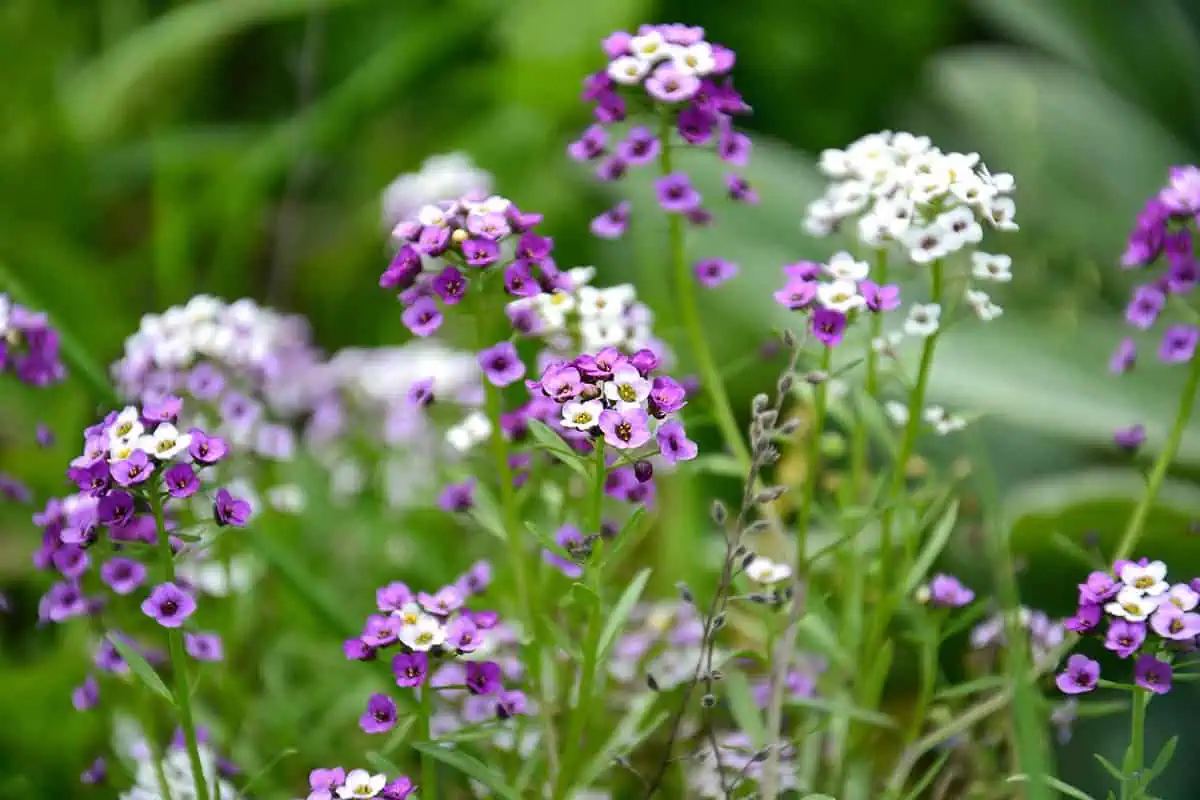
Scientific name: Lobularia maritima
Sun requirements: Full sun to partial shade
Height: 4″-8″
Hardiness zones: 5-9
Alyssum, also known as Sweet Alyssum, is a low-growing annual known for its fragrant, tiny blooms. These plants thrive in full sun to partial shade and well-drained soil, making them ideal for various garden settings. Alyssum is a prolific self-seeder, ensuring a continuous display of flowers year after year.
To increase the chances of your alyssum self-seeding, allow some of the flowers to go to seed and scatter naturally. This will lead to a fresh crop of plants each season. Alyssum is excellent for borders, rock gardens, and containers. Its sweet fragrance and delicate appearance make it a favorite among gardeners.
13. Nasturtium

Scientific name: Tropaeolum majus
Sun requirements: Full sun to partial shade
Height: 6″-12″
Hardiness zones: 9-11
Nasturtiums are beloved for their vibrant, edible blooms that thrive in full sun to partial shade and well-drained soil. These plants are easy to grow and can tolerate poor soil conditions, making them ideal for various garden settings. Nasturtiums are prolific self-seeders, ensuring a continuous display of flowers year after year.
To increase the chances of your nasturtiums self-seeding, allow some of the flowers to go to seed and scatter naturally. This will promote a fresh crop of plants the following season. Nasturtiums are excellent for borders, containers, and companion planting in vegetable gardens. Their bright colors and edible flowers make them a valuable addition to any garden.
14. Forget-Me-Not

Scientific name: Myosotis sylvatica
Sun requirements: Full sun to partial shade
Height: 6″-12″
Hardiness zones: 3-8
Forget-Me-Nots are charming biennials known for their delicate, blue blooms. These plants thrive in full sun to partial shade and well-drained soil, making them easy to grow in various garden settings. Forget-Me-Nots are prolific self-seeders, ensuring a continuous display of flowers year after year.
To increase the chances of your Forget-Me-Nots self-seeding, allow some of the flowers to go to seed and scatter naturally. This will lead to a fresh crop of plants each season. Forget-Me-Nots are excellent for borders, woodland gardens, and containers. Their delicate appearance and cheerful blooms make them a favorite among gardeners.
15. Sunflower

Scientific name: Helianthus annuus
Sun requirements: Full sun
Height: 3′-12′
Hardiness zones: 2-11
Sunflowers are iconic annuals known for their tall, bright blooms that thrive in full sun and well-drained soil. These plants are easy to grow and can tolerate poor soil conditions, making them ideal for various garden settings. Sunflowers are prolific self-seeders, ensuring a vibrant display of flowers year after year.
To increase the chances of your sunflowers self-seeding, allow some of the flowers to go to seed and scatter naturally. This will promote a fresh crop of plants the following season. Sunflowers are excellent for borders, mass plantings, and as cut flowers. Their tall, striking appearance and ability to attract pollinators make them a valuable addition to any garden.
16. Cleome (Spider Flower)
Scientific name: Cleome hassleriana
Sun requirements: Full sun to partial shade
Height: 3′-5′
Hardiness zones: 10-11
Cleomes, also known as Spider Flowers, are tall annuals known for their unique, spidery blooms. These plants thrive in full sun to partial shade and well-drained soil, making them easy to grow in various garden settings. Cleomes are prolific self-seeders, ensuring a continuous display of flowers year after year.
To increase the chances of your cleomes self-seeding, allow some of the flowers to go to seed and scatter naturally. This will lead to a fresh crop of plants each season. Cleomes are excellent for borders, mass plantings, and as cut flowers. Their tall, striking appearance and ability to attract pollinators make them a valuable addition to any garden.
17. Balsam
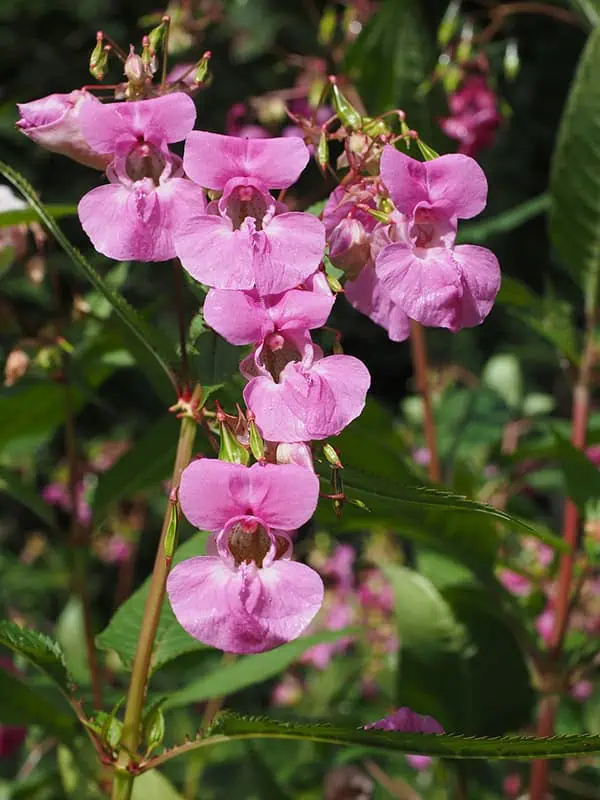
Scientific name: Impatiens balsamina
Sun requirements: Full sun to partial shade
Height: 12″-24″
Hardiness zones: 2-11
Balsams are charming annuals known for their colorful, cup-shaped blooms. These plants thrive in full sun to partial shade and well-drained soil, making them easy to grow in various garden settings. Balsams are prolific self-seeders, ensuring a continuous display of flowers year after year.
To increase the chances of your balsams self-seeding, allow some of the flowers to go to seed and scatter naturally. This will promote a fresh crop of plants the following season. Balsams are excellent for borders, mass plantings, and containers. Their bright colors and easy-to-grow nature make them a favorite among gardeners.
